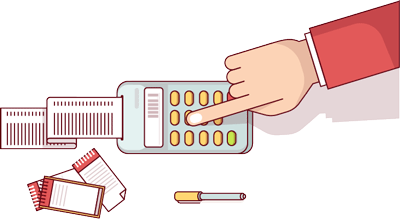احتمال بروز خطای انسانی در وظایف مامایی بخش زایمان
خطاهاي انساني به مجموعه اي از اعمال انساني گفته مي شود كه از هنجارها، حدود و استانداردهاي از قبل تعريف شده، طبيعي و قابل قبول تخطي مي نمايد و برکارایی سیستم اثر نامطوب دارد. مطالعات نشان داده خطای انسانی عامل بروز بیش از 90درصد حوادث صنعتی بوده است[1] . محیط های درمانی و بیمارستانی یکی از سیستم های کاری پیچیده محسوب می شوند. خطا انسانی بدلیل تنوع وظایف، بارکاری بالا، خستگی، نقص در پردازش اطلاعات، نقص در تصمیم گیری بروز می کند. خطای پزشکی یکی از رایج ترین خطاهای تهدید کننده سلامت است که بر مراقبت و درمان بیمار تاثیر می گذارد. خطای پزشکی به اشکال مختلف همچون خطاهای در تشخیص، خطاهای داروئی، مراقبت های پرستاری،خطای جراحی،کمبود مهارت و غیره ممکن است رخ دهد[2-4]. خطای پزشکی به عنوان یک مشکل جهانی مطرح است و افزایش میزان مرگ و میر، مدت بستری و هزینه های درمان را در پی خواهد داشت. براساس آمارها سالیانه بیش از 98000 مرگ ناشی از خطای پزشکی در بیمارستان های آمریکا اتفاق می افتد[5]. مطالعات نشان داده که گزارش خطاها درفرآیند مراقبت های درمانی مزایای فراوانی داشته ولی عمدتا کارکنان به علت ترس از مجازات اداری و یا واکنش بیماران تمایل به گزارش خطاهای صورت گرفته ندارند[2]. تکنیک های متعددی برای ارزیابی قابلیت اطمینان انسان ارائه شده است از جمله SHERPA ، HEART، ATHENA ، EHو غیره می باشد. یکی از این تکنیک ها ، تکنیک EH) engineering approach) می باشد که از تکنیک های ارزیابی کمی احتمال خطاهای انسانی است که اولین بار توسط ژیکیانگ و همکاران در سال 2009 به کار گرفته شد. در این تکنیک هر وظیفه ی شغلی در سه سبک رفتاری مهارت بنیان Skill base ، قانون بنیان Rule base و دانش بنیان knowledge base مورد آنالیز قرار گرفته و در نهایت احتمال خطای انسانی در هر وظیفه ی شغلی برآورد می گردد. منظور از رفتار مهارت بنیان ، رفتارهایی است که در آن فعالیت ها آنقدر تمرین و تکرار شده اند که به صورت خودکار و بودن نیاز به هوشیاری زیاد انجام می شوند. در رفتار قانون بنیان ، فعالیت ها در سطح بالاتری از هوشیاری و شناخت انجام می شوند. در این سطح انسان برای انجام کارها از یک سری قاعده و قانون در قالب دستورالعمل ها ، استفاده می کند. رفتار دانش بنیان بالاترین سطح رفتاری است و هنگامی بروز می نماید که فرد خود را در موقعیتی کاملا" جدید می یابد. در این شرایط انسان برای حل مشکل بر هوشیاری و دانش خود متکی شده ودست به ابتکار می زند. تکنیک دوم مورد استفاده در این مطالعه تکنیک PHEA(Predictive human error analysis) می باشد که این تکنیک کلیه ی خطاهای انسانی در وظایف شغلی را بصورت کیفی مورد شناسایی و آنالیز قرار می دهد. مهمترین مزایای این تکنیک راحتی استفاده ، نظامند بودن و همچنین مبتنی بودن آن بر تکنیک Hierarchical task analysis (HTA) است. در این تکنیک پیش بینی خطاهای انسانی در هر کدام از وظایف یا مراحل شغلی ، چگونگی بازیابی خطاهای پیش بینی شده قبل از بروز پیامد نامطلوب انجام می گیرد. علت انتخاب تکنیک EH برای این بوده است که وظایف براساس احتمال بروز خطا از نظر آموزش، سطح تجربه، آشنایی با شرایط، موجود بودن دستورالعمل، فشار زمانی رتبه بندی گردد و وظایف با بالاترین احتمال بروز خطا شناسایی شود و تکنیک PHEA برای توصیف خطا و ارائه راهکار کنترل آن انتخاب گردید. مطالعات مختلفی در رابطه با خطای انسانی در محیط های درمانی از جمله خطای انسانی در پزشکان، پرستاران و کارشناسان آزمایشگاه بالینی صورت گرفته است. [8, 11]. ولی مطالعات انجام شده در خصوص خطای انسانی در مامایی محدود می باشد. حرفه ی مامایی در بخش زایشگاه از لحاظ بروز خطا در آن که سبب به خطر افتادن جان مادر و نوزاد و افزایش هزینه های درمان می شود اهمیت دارد(1و12). این مطالعه با توجه به اینکه تاکنون به طور خاص در این مورد و با این تکنیک ها صورت نگرفته است، با هدف ارزیابی خطا در وظایف مامایی بخش زایشگاه بیمارستان تخصصی زنان و زایمان با استفاده از تکنیک های PHEA و EH انجام گرفته است.
risk of human errors in midwifery tasks in child delivery ward
Human errors (HEs) include a set of actions that breach the predefined norms, limits, and standards and have a negative effect on the system. Studies have shown that human errors are the source of 90% of incidents in industries [1]. Medical and hospital environments are among the highly complicated work systems prone to HEs due to diversity of tasks, heavy workload, fatigue, misprocessed information, and failure in decision making. Medical errors are among the most common health threatening errors that affect the care and treatment provided to the patient. Medical errors take place in different forms like errors in diagnosis, administered drugs, nursing services, surgery room, and the errors caused by lack of skills [2-4]. Medical errors are not limited to a specific country and all around the world they increase mortality rate and medical costs. As suggested by statistics, more than 98000 deaths in the USA were due to medical errors [5]. Studies have shown that reporting errors in medical care procedures brings in several advantages; however, most of the personnel fear the consequences or patients’ responses [2]. There are many techniques to assess reliability of human such as SHERPA, HEART, ATENA, and EA. Engineering approach (EA) is one of the quantitative assessment techniques to measure probability of human errors, which was first introduced by Zhigiang et al. (2009). Based on this technique, each professional task is analyzed based on three behavioral styles of skill base, rule base, and knowledge base to obtain the probability of human error for each task. By skill base behavior we refer to the behaviors in which the activities are so frequently practiced that they are done automatically with no need for extensive awareness. With regard to rule base behaviors, activities are done with a higher level of awareness and cognition. For such tasks, people follow a set of rule and regulation introduced as instructions. Knowledge base behaviors have the highest behavioral level and they are demonstrated when the individual finds themselves in a new situation where solving problems needs innovation. Another technique used in this study is predictive human error analysis (PHEA) where all HEs are identified and analyzed qualitatively. The main advantages of this technique are ease of use, systematic nature, and its reliance on hierarchical task analysis (HTA). This technique predicts human errors for each task or at any stage and prevents the predicted errors. The reason for using EA technique is that it ranks errors based on their probability in terms of education, level of experience, familiarity with situation, availability of instruction, and time pressure. Through this, tasks with the highest probability of errors are identified and the PHEA would be used to describe the error and solutions to control it. There have been several studies on HEs in medical environment such as HEs in physicians, nurses, and clinical lab experts [8, 11]. Still, there is a paucity of studies on HEs in midwifery. Such errors cause life threatening risks for mother and the infant and increase medical costs [11, 12]. Given the gap in the literature, the present study tries to evaluate error in midwifery tasks in the maternity ward of a genecology hospital using PHEA and EA techniques.
ادامه مطلب

















نظرات و سوالات:
نظرات و پرسشهای قبلی